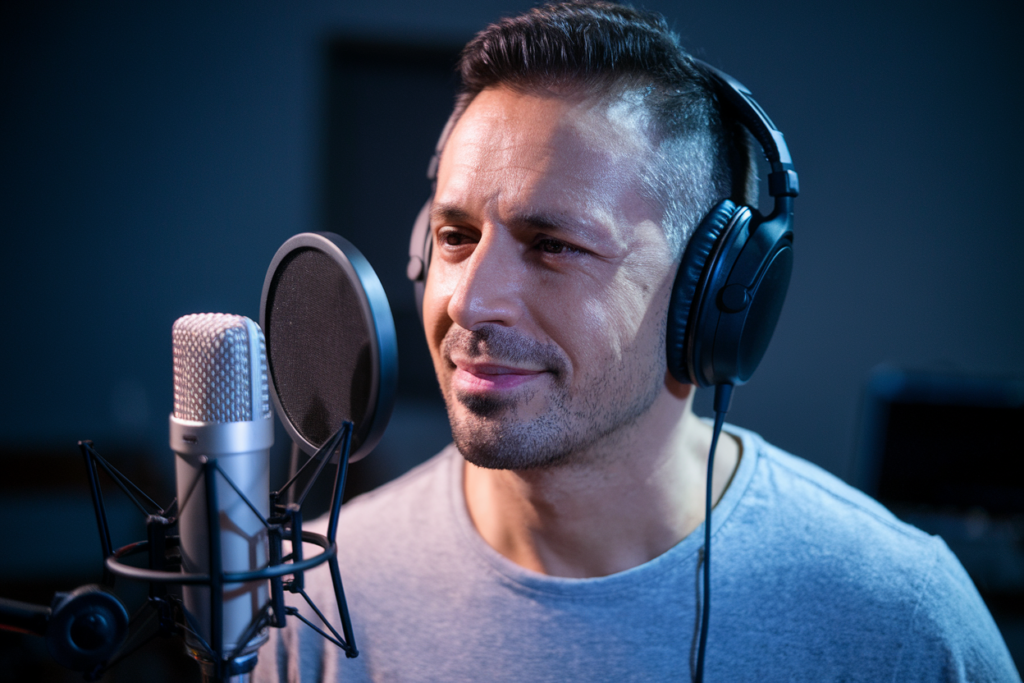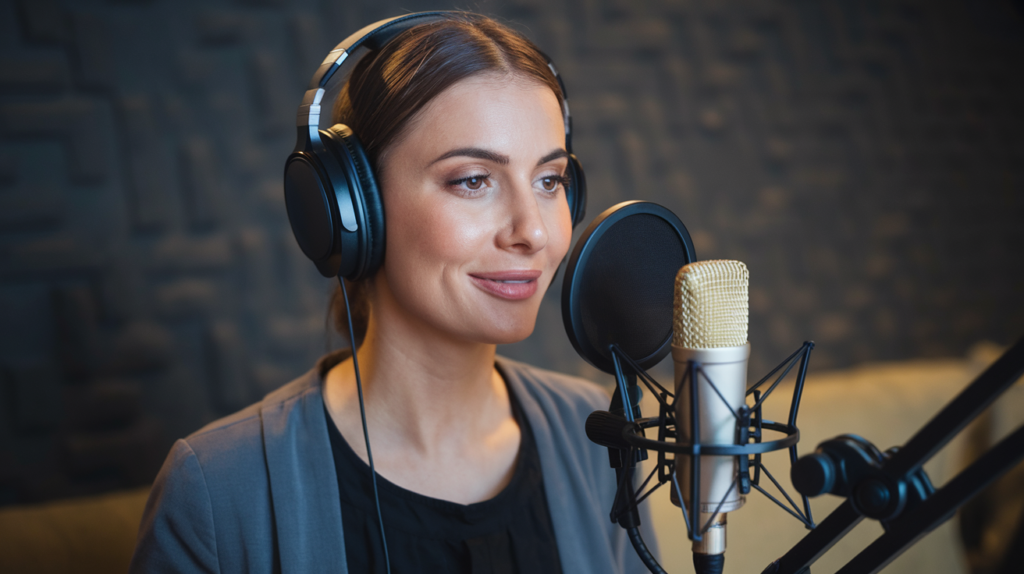Key Takeaways
- Localization is essential for adapting videos for Turkish viewers, involving cultural nuances beyond simple translation.
- Incorporating local customs, humor, and familiar settings creates relatable content that resonates with the audience.
- Language considerations, including regional dialects and colloquial expressions, enhance viewer connection and engagement.
- Effective subtitling techniques should focus on cultural adaptation, clear formatting, and language variations to improve accessibility.
- Selecting culturally aware voiceover talent ensures natural delivery and emotional resonance in video content.
- Engaging Turkish audiences requires attention to visual appeal and audio preferences that reflect local aesthetics.
Ever wonder how to effectively adapt videos for Turkish viewers? With the rise of digital content consumption in Turkey, it’s crucial to tailor your videos to resonate with this vibrant audience. You might think translating subtitles is enough, but there’s so much more you can do to truly engage them.
Understanding the Importance of Localization
Localization plays a crucial role in making videos resonate with Turkish viewers. It’s more than just translating subtitles; it involves adapting content to fit cultural nuances and preferences.
Cultural Relevance in Video Content
Cultural relevance shapes how audiences connect with your message. You must consider local customs, traditions, and humor when creating video content for Turkey. For example, incorporating familiar settings or culturally significant themes makes your material relatable. Using voiceover talent who understand these nuances can enhance authenticity and ensure that the delivery feels natural to the audience.
Language Considerations
Language is a vital aspect of localization. While standard Turkish may suffice for basic comprehension, regional dialects enrich communication. Engaging a skilled voice artist familiar with colloquial expressions can elevate your video’s impact. Choose a voice over actor who not only masters the language but also understands its emotional weight within context. This approach helps you create a connection with viewers, making them feel understood and valued.
Strategies for Adapting Videos for Turkish Viewers
Adapting videos for Turkish viewers requires thoughtful strategies that go beyond basic translation. Utilizing effective techniques can significantly enhance viewer engagement and connection.
Subtitling and Captioning Techniques
Subtitling and captioning play a crucial role in making your videos accessible to Turkish audiences. Prioritize the following techniques:
- Cultural Adaptation: Ensure subtitles reflect local idioms, humor, and references. This approach resonates more deeply with viewers.
- Clear Formatting: Use legible fonts and appropriate timing for captions. Ensure they’re easy to read without distracting from the visuals.
- Language Variations: Consider regional dialects when creating subtitles. Tailoring language choices can foster a stronger connection with diverse audience segments.
Voiceover and Dubbing Options
Voiceovers offer an engaging way to present content in Turkish while maintaining its original essence. When considering voiceover options, keep these factors in mind:
- Voice Talent Selection: Choose voice artists who are not just fluent but also understand cultural nuances. Their ability to convey emotion will enhance relatability.
- Natural Delivery: Opt for voice actors who deliver lines naturally, mimicking everyday speech patterns of native speakers.
- Localization of Script: Adapt scripts to fit cultural contexts rather than direct translations. This strategy helps maintain the intended message while ensuring it feels authentic.
By focusing on these strategies, you create video content that truly speaks to Turkish viewers, fostering engagement and building a loyal audience base.
Tools and Software for Effective Adaptation
Adapting videos for Turkish viewers involves leveraging the right tools and software. Utilizing these resources streamlines the adaptation process and enhances audience engagement.
Video Editing Software
Video editing software plays a crucial role in customizing content. Programs like Adobe Premiere Pro, Final Cut Pro, or DaVinci Resolve allow you to edit video sequences efficiently, ensuring seamless integration of localized elements. You can add subtitles that resonate with local idioms while maintaining clear formatting for optimal readability. Additionally, incorporating culturally relevant visuals can enhance viewer connection, making your content more appealing to a Turkish audience.
Localization Platforms
Localization platforms simplify the adaptation process by offering specialized services tailored for specific markets. These platforms provide features such as translation management, collaboration tools, and access to professional voice talent who understand cultural nuances. Using these resources ensures that your voiceovers reflect local dialects and expressions accurately. They also help you connect with skilled voice artists who can deliver authentic performances that engage viewers effectively. By selecting the right localization platform, you streamline your workflow while enhancing the overall quality of adaptations aimed at Turkish audiences.
Best Practices for Engaging Turkish Audiences
Engaging Turkish audiences requires a thoughtful approach that considers their unique cultural landscape. Here are some best practices to enhance your video content.
Content Style and Humor
Content style plays a crucial role in resonating with Turkish viewers. Incorporate local humor, as it often reflects cultural values and social dynamics. For instance, using wordplay or regional jokes can create relatability. Avoid generic humor; instead, opt for references familiar to the audience. Tailoring your content’s tone—whether it’s informal or serious—also matters; understanding what appeals to this demographic ensures better engagement.
Visual and Audio Preferences
Turkish viewers appreciate visually appealing content that emphasizes storytelling. Use vibrant colors and dynamic visuals that reflect local aesthetics. When it comes to audio elements, carefully consider the use of voice talent. Employing skilled voice actors who understand regional dialects enhances authenticity and connection with the audience.
Selecting the right background music also impacts viewer retention. Opt for music styles popular in Turkey, as they set the mood and resonate emotionally with the audience. Using culturally relevant sound effects can further enrich your video’s immersive experience.
By implementing these strategies focused on localized content style and visual/audio preferences, you’ll foster stronger connections with Turkish audiences while enhancing overall engagement levels in your video productions.
Conclusion
Adapting your videos for Turkish viewers is essential for building a strong connection and fostering engagement. By focusing on localization and cultural relevance you can create content that resonates deeply with this audience. Remember to consider local customs humor and dialects when crafting your messaging.
Utilizing the right tools and software will streamline your adaptation process while ensuring high-quality results. Prioritize visual appeal and sound choices that align with Turkish preferences to capture attention effectively.
By implementing these strategies you’ll not only enhance viewer retention but also cultivate a loyal following in Turkey’s growing digital landscape. Your commitment to understanding and embracing cultural nuances will set your content apart in an increasingly competitive market.
Frequently Asked Questions
Why is localization important for Turkish viewers?
Localization ensures that content resonates culturally with Turkish audiences. It goes beyond simple translation, incorporating local customs, humor, and language nuances to create relatable video experiences.
How can I adapt my videos for a Turkish audience?
To adapt videos effectively, use localized subtitles that reflect idioms and humor, select appropriate voice talent who understand cultural context, and incorporate vibrant visuals tailored to Turkish preferences.
What tools can help in video adaptation for Turkey?
Video editing software like Adobe Premiere Pro and Final Cut Pro are essential for customizing content. Additionally, localization platforms can provide professional translation services and access to skilled voice artists familiar with regional dialects.
What role do regional dialects play in video engagement?
Using regional dialects enhances connection with diverse audience segments by making the content more relatable. It shows respect for local culture and helps convey messages more naturally.
How does visual appeal impact viewer retention in Turkey?
Visual appeal is crucial as it captures attention. Utilizing vibrant colors and dynamic storytelling aligns with Turkish aesthetic preferences, leading to better engagement and emotional connections with viewers.







